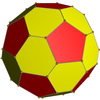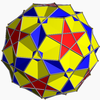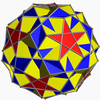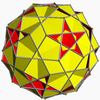Rhombicosahedron
In geometry, the rhombicosahedron is a nonconvex uniform polyhedron, indexed as U56. It has 50 faces (30 squares and 20 hexagons), 120 edges and 60 vertices.[1] Its vertex figure is an antiparallelogram.
| Rhombicosahedron | |
|---|---|
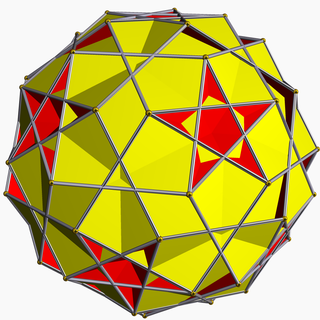 | |
| Type | Uniform star polyhedron |
| Elements | F = 50, E = 120 V = 60 (χ = −10) |
| Faces by sides | 30{4}+20{6} |
| Coxeter diagram | |
| Wythoff symbol | 2 3 (5/4 5/2) | |
| Symmetry group | Ih, [5,3], *532 |
| Index references | U56, C72, W96 |
| Dual polyhedron | Rhombicosacron |
| Vertex figure |  4.6.4/3.6/5 |
| Bowers acronym | Ri |

